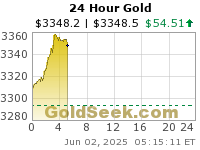Using the excellent software available freely at FreeStockCharts.com, I prepared this study of the Buy/Sell signals given by 3 specific techniques of interpreting the True Strength Index indicator (TSI) on the GLD ticker symbol.
*
I began my study of daily price action as far back in time as the software would allow me, and then broke the time span into 3 successive charts covering the 2 year period.
*
The 3 TSI techniques I used were:
1. Divergence of indicator with respect to price movement
2. Trend line break of the TSI indicator
3. ZERO line crossover of the TSI indicator
*
I did not attempt to identify every single example of these 3 techniques as space on the chart was limited. However, I do think I did a good job of hitting the decision-making highlights.
*
There are four other techniques I did not use in this study. Perhaps in another study. This first chart is GLD from Sept '08 to March '09
*
Click on the chart to ENLARGE
This second daily chart is GLD from March '09 through October '09.
*
One of the interesting things this chart showed me is that there are times when a buy or sell situation will cluster - yielding the same correct signal until price finally obliges with the anticipated direction of price movement.
*
Click on the chart to ENLARGE
*
This third GLD chart brings us from Nov. '09 to the present mid-July '10.
*
The 4 Buy/Sell TSI techniques this study did not include were:
1. Use of moving average on the TSI
2. Concept of horizontal support and resistance analysis
3. Concept of distance above/below ZERO and how that changes interpretation (I did use this once in this study, now that I think about it)
4. Varying the time magnification (1 day, 60 min, 30 min, etc.) and TSI magnification (13,13 vs 7,4, etc).
*
Please know that the techniques employed in this study work well on indexes, ETFs, stocks, currencies, commodities and anything else that has price movement and therefore, momentum, that can be calculated.
*
Click on the chart to ENLARGE



![[Most Recent Quotes from www.kitco.com]](http://www.kitconet.com/images/quotes_special.gif)




No comments:
Post a Comment